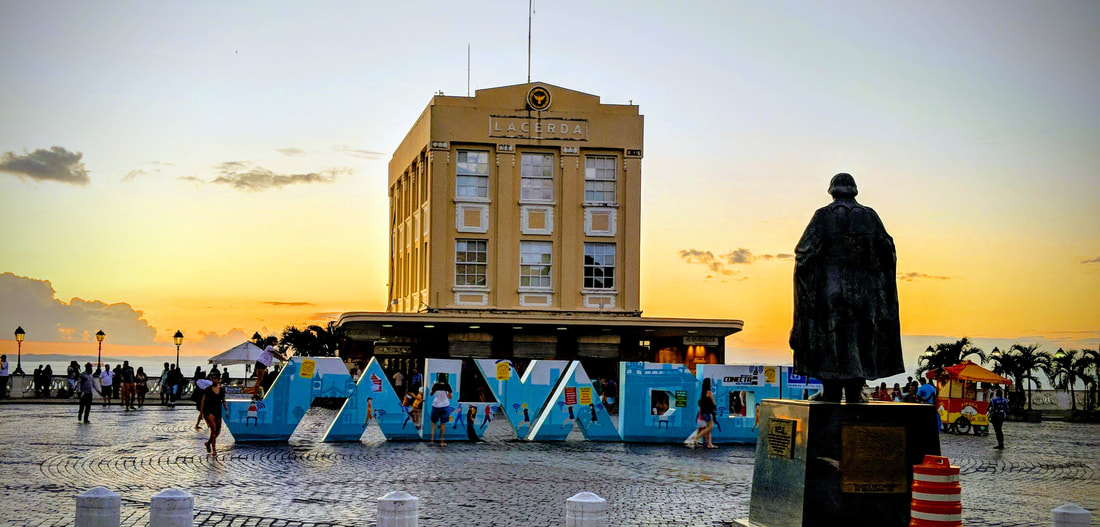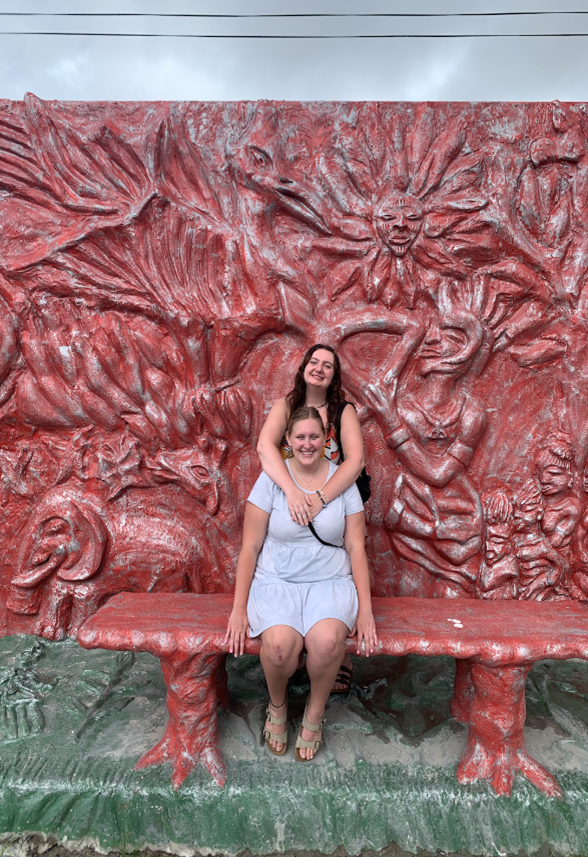|
By Kailee Hagl and Hailee Thayer. Candomblé is one of many Afro-Brazilian religions that are present in Brazil. Candomblé, along with the other religions, are key aspects of Brazilian culture and heritage. To understand Candomblé, one needs to understand how it was made. Candomblé was made through syncretism. Syncretism is the “process by which elements of 1 religion are assimilated into another religion resulting in a change in the nature of the religion. It creates an entirely new religion” (Lecture on Umbanda and Candomblé, May 16, 2022). This syncretism can be seen in the Sisterhood of Good Death, which practices both Catholic and Candomblé traditions. Cachoeira (where the Sisterhood of Good Death is located) has become a major place for Candomblé and for the preservation of African culture and origins (Lecture on African Diaspora, May 19, 2022). This preservation is a key part of Candomblé because the traditions and histories are passed down to Mãe or Pai de Santo and they are tasked with keeping the information safe. We also learned that there are about an even number of women and men leading the Terreiros, which is vastly different from Catholicism where women are not allowed to be priests. During Candomblé ceremonies, and even just on Fridays, white is typically worn. For women, a white dress is the usual, and for men, white pants and a white top is normal (Shirey 2012). Our host mom dresses in all white on Fridays along with white beads to represent Oxalá, one of the 12 Orixás. In Candomblé, practioners worship 12 spirits, or gods, called Orixás. The Orixás that are recognized in Brazil are Oxalá, Lemanjá, Xangô, Iansã, Oxóssi, Ogum, Oxum, Exú, Omulu, Nanã, Ossaim, and Oxumaré (Guess which one(s) are Hailee’s). Each Orixá is associated with a color and nature element as well as having a unique symbol. Kailee’s Experience I was not allowed to watch Hailee have her shells read, so I waited outside with our host parents. While waiting, I was allowed to take pictures of the outside of the Terreiro. The Terreiro is similar to a church, or place of worship. It is also referred to as a house. The walls were sculpted beautifully with the various Orixás, some finished with color and some not. Outside of the gate, the walls and sidewalk were also sculpted with the faces of the Orixás. Our host dad, Jorge, said everything was sculpted by hand, and is similar to papier mâché. He said it takes a long time to fully complete a sculpture as the details must be perfected before the paint can be added on. I took this time to interview our dad about the positions or roles they have in this specific Terreiro of Candomblé, since they are practioners. Jorge said his role was to take videos and photos for the Terreiro. He said he also helps prepare for special occasions. Our host mom, Licia, said her role was to prepare food for the Terreiro, and most importantly to make sure the Orixás have everything they need and want. As people were walking in and out of sections of the Terreiro, Jorge and Licia were telling me which Orixás they were. It was interesting because they carried themselves and were dressed in a way that mirrored their Orixás. Finally, since outsiders were not allowed to take photos or videos of the inside of the Terreiro especially while a reading is in session, Jorge was able to show me some of the videos he had taken. Although I did get to go inside of the Terreiro before Hailee had her reading, I did not have much time to get a good look at anything, so it was awesome that Jorge had all this footage of the inside due to his role in Candomblé. Hailee’s Experience At the beginning of the trip, I had no idea that I would learn about Afro-Brazilian Religions. Fast forward a couple of weeks and here I am, partaking in a ritual to learn which Orixá is mine and about my life. In the weeks before this, we had a lecture with Pai Alcides about how Candomblé is practiced. He shared that before he started his journey in the religion, he would have seizures (Lecture on Candomblé Practices, May 16, 2022). Ailments like seizures are common among those who were drawn to Candomblé. Injuries or sicknesses are a way for the Orixás to communicate and pull the person towards Candomblé. Something similar was happening to me, but I was having dreams instead of sicknesses or injuries. I had multiple dreams that I was getting my shells read (the ritual I mentioned earlier). The shells are a form of divination that a Mae or Pai do Santos uses to communicate with the Orixás. I did not have just one dream either, it was multiple. The dreams were explained in my reading as a way my Orixás were ‘calling’ me to the Terreiro. My host parents are practioners of Candomblé and took me to their Terreiro, Bábataósilé. Their Pai do Santos, Pai Mario, was the one who did my shell reading. During the reading I was told who my Orixás are and how they can affect my life. My Orixás are Xangô, Ogum, and Oxalá. Xangô is the strongest one along with Ogum. Both Orixás are warriors. Pai Mario said that these two warriors explain why I am feisty. Along with being a warrior Xangô is associated with lighting and thunder and Ogum is associated with war and iron During the shell reading, I found out various things about my life and about previous events that happened. Through the shells, Pai Mario was able to see health problems in my family (both my grandparents had recent shoulder surgeries; they’re fine don’t worry). My Orixás were able to communicate with me through Pai Mario and said to be careful with betrayal in my life (which had happened earlier this year). There was so much that was explained in this ritual that it is hard to put it into words. After my reading, Pai Mario told me which colored beads I should have based on my Orixás. My host parents gifted me a white and red strand to represent them. Works Cited Pai Alcides. “Lecture on Candomblé Practices” May 16, 2022. Salvador, Bahia, Brazil. Santos, Willys. Lecture on “Umbanda and Candomblé: The History, Tenets, and Practices” May 16, 2022, Salvador, Brazil. Vatin, Xavier. “The African Diaspora in Bahia: A Socio-Anthropological Perspective” May 19, 2022. Cachoeira, Bahia, Brazil. Shirey, Heather. 2012. “Candomblé Beads and Identity in Salvador Da Bahia, Brazil.” Nova Religion: The Journal of Alternative and Emergent Religions 16 (1): 36–60. https://doi.org/10.1525/nr.2012.16.1.36. Kailee Hagl is a junior at CSB/SJU and is majoring in Political Science with a focus on law. She also is pursuing a minor in Hispanic Studies, as well as a minor in Latin American Studies. She is originally from Sauk Centre, Minnesota. Kailee enjoys learning about politics in other countries, social justice issues, and analyzing court cases. She looks forward to applying her experience abroad to her academics in her final year at CSB/SJU.
Hailee Thayer recently graduated from the College of Saint Benedict and Saint John's University with a major in Political Science and a minor in Gender Studies. She is from Prior Lake Minnesota. Hailee enjoys learning about the intersection of gender and aspects of everyday life as well as political representation. Hailee also enjoys reading in her free time and playing rugby.
0 Comments
Leave a Reply. |
Archives
June 2024
Categories
All
|






 RSS Feed
RSS Feed
